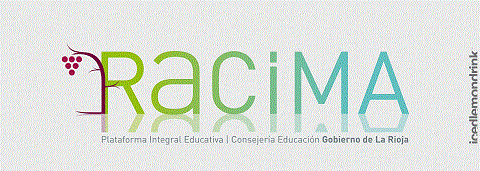History
The Jesuits arrive in Logroño
1559
The Jesuits arrive in Logroño

Canon Francisco de Medrano petitions Francisco de Borja, at that moment the Society of Jesus’s highest authority in Spain, to send Jesuit priests to Logroño to found a school.
Six Jesuits arrive in Logroño, four Fathers and two Brothers. They purchase some land and receive donations that provide them with enough space to found the first school to stand on the plot now delimited by the streets
Muro de la Mata, Práxedes Mateo Sagasta, Hermanos Moroy and Marqués de Vallejo.
The school begins to teach Humanities, Arts, Philosophy, Theology and Grammar
1564-90
The school begins to teach Humanities, Arts, Philosophy, Theology and Grammar

The City Council of Logroño asks the Jesuits to arrange classes in Grammar for children, paid for by the Council and free for those children.
Antonio Vázquez, mecenas
1594
Antonio Vázquez, mecenas
Antonio Vázquez, a patron from Logroño, collaborates in the school’s upkeep and helps it to overcome its financial difficulties.
Closure of the school in Logroño
1767
Closure of the school in Logroño

King Carlos III orders the Society of Jesus to be expelled from Spain. On 4th April 1767, the Jesuit community in Logroño made up of 20 members leaves the city and heads for the port of Bilbao to embark for the Papal States.
The School and all its facilities were taken over by the Bishopric, to be used as a seminary (1769-1929). The entire building was demolished in 1929.
The Society of Jesus returns to Logroño
1899
The Society of Jesus returns to Logroño

The Society of Jesus returns to Logroño, albeit without its own school. They occupy the Residencia, which since then has been referred to as the home of the Jesuits, in the street Rodríguez Paterna, near the Church of San Bartolomé.
From 1903 onwards, the Jesuits manage free “private schools”
1903
From 1903 onwards, the Jesuits manage free “private schools”

By 1942, the Society has six schools, which are defined as “semi-national” (semi-state). The state paid half the teachers’ wages.
The classrooms were housed in the Marqués de Monesterio building (now the Social Security’s head offices in the city). There were two classrooms for boys and four for girls.
Foundation of the Catholic School Trust called Patronato de las Escuelas Católicas de San Bernabé
1946
Foundation of the Catholic School Trust called Patronato de las Escuelas Católicas de San Bernabé

Creation of the Catholic School Trust called Patronato de las Escuelas Católicas de San Bernabé, with its first governor being Father Cándido Marín of the Society of Jesus (SJ). There were three classrooms for boys and four for girls,
as well as a vocational college for painting and carpentry.
In 1947, these facilities are joined by an officially recognised vocational college and three unofficial ones. A need for more space leads to the purchase and refurbishment of the teacher training building, the Escuela Normal del Magisterio,
located in the street Rodríguez Paterna.
San Bernabé Graded School
1950
San Bernabé Graded School

This was the date of the purchase of a building on the street Rodríguez Paterna, which the following year (1951) opened as the Trust’s graded school “Escuela Graduada San Bernabé”.
In 1953, Father Ancín SJ arranged the necessary procedures for the approval of the school project, the purchase of lands, and the start of building work between the street Huesca /the railway line / and the streets Chile and Lardero.
The school in Mirasierra
1957
The school in Mirasierra

As the prior step to the future school, classes were first held this year in a private home, Mirasierra, which stood on what is now the avenue Gran Vía de Juan Carlos I, to the south of the old railway line.
It had four classrooms for secondary education (Bachillerato e Ingreso) and two for the Sixth Form (Preparatoria).
El colegio en la calle Huesca
1961
El colegio en la calle Huesca

The school on Huesca Street opened on 8th October. The initial premises consisted of nine classrooms, four study rooms, a laboratory, and chapel, and the basement had a workshop, three classrooms, and a room for technical drawing,
carpentry and a metal forge. The upper floors housed the rooms and other living quarters used by the Jesuit Community.
New Vocational Training workshops
1965-1966
New Vocational Training workshops

The start of the 1965-66 school year saw the introduction of new Vocational Training workshops. The basement in Huesca Street where the classrooms corresponding to these studies were housed was vacated, and they
were moved to the new building in the street Lardero, nearer the railway line. That year saw work start on the building of the technical college (Colegio Menor) in the southern area. (Photo of the Colegio Menor)
Extension of the Vocational Training building
1974
Extension of the Vocational Training building

Work began on the building-extension of Vocational Training, offices, management, etc…, in the area of what is now the street Duques de Nájera.
In 1976, a second floor is added to the building. In this year also, the school “Escuela Graduada San Bernabé” is moved from the street Rodríguez Paterna to the new premises. Out of all the units it comprises overall
(19 of Primary, 4 of Pre-school, 2 of Physical Education and Course Management), the new premises house eight Primary classrooms and two pre-school ones.
Primary building
1979
Primary building

A new building opens in parallel to what is now the street Duques de Nájera, with three floors and a basement. This will house the classrooms for secondary education and the second cycle of Primary. It also has an assembly hall.
Parish of San Ignacio and multisports facility
1981-1983
Parish of San Ignacio and multisports facility

Under the management of the priest Father Gerardo Cuadra, architect of the Diocese, the Parish of San Ignacio de Loyola is built with its church, a chapel, rooms and offices.
The work also includes a multisports facility in the form of a pelota court attached to the building that was later enclosed with glass in the summer of 2013.

In 1983, the street Duques de Nájera was opened, splitting the school/college into two.

Duques de Nájera sports facility
2006
Duques de Nájera sports facility

A modern new sports facility is built on the street Duques de Nájera.
Celebration of the school’s fiftieth anniversary
2007
Celebration of the school’s fiftieth anniversary
Several events were held::

- 25th March 2007: 50th Anniversary Grand Gala, held at the Municipal Auditorium in Logroño.
- Celebration of a solemn mass in the parish of San Ignacio..
- Photo exhibition at a gallery in Logroño..
- Lectures..
- Publication of two books about the school::
- For children: “Cuenta 50”, by Antonio de Benito
- School history: “Un largo caminar”, by J. Mª Bañuelos.
Silver Q Quality Award
2007
Silver Q Quality Award
Award of the Silver Certificate for Excellence according to the management model propounded by the European Foundation for Quality Management that was launched at the school in 2002.

European Star Award
2016
European Star Award

The Logroño Local Authority honours the school with the European Star Award 2016 for its work in promoting an understanding of European reality, as well as for its relationship with different EU countries and programmes..
New building on Duques de Nájera
2017
New building on Duques de Nájera

Bilingual Project

The official inauguration of this new building was held on 20th January 2017. It improves access to the school and makes it safer for everyone. It houses the following basic services:
Reception, Secretary’s Office, Admin, Visitors’ Rooms and Meeting Rooms.
The Bilingual Project in Year 1 of Primary is launched in 2017-2018.
Other data
- The sports club Sociedad Deportiva Loyola has been in operation at the school since 1962.
- Association of Former Pupils, since 1996, when the school principal was Father Fernando de la Puente..
- Pupils and Students Association, since 1987.
- Classes for Senior Citizens, since 1978, when the school principal was Father Carlos Conde.
- Newsletter, when the school principal was Father Carlos Conde. From 1978 to 2014.
- Photo archive on the school’s history with over 9,000 photos.




